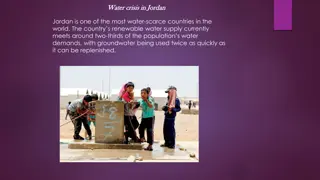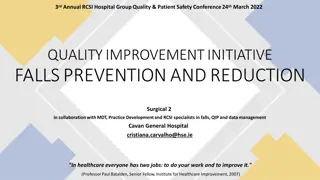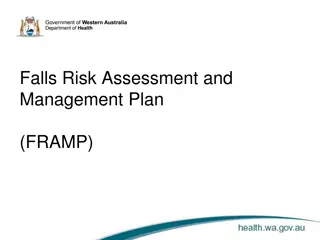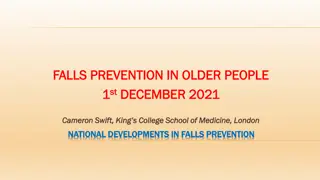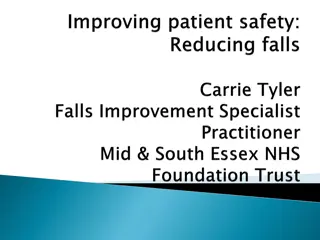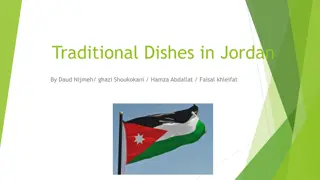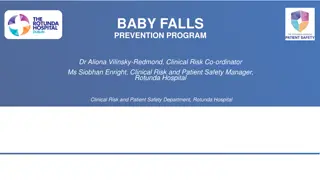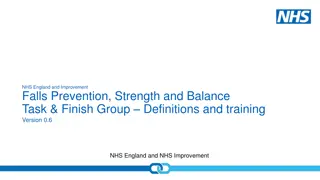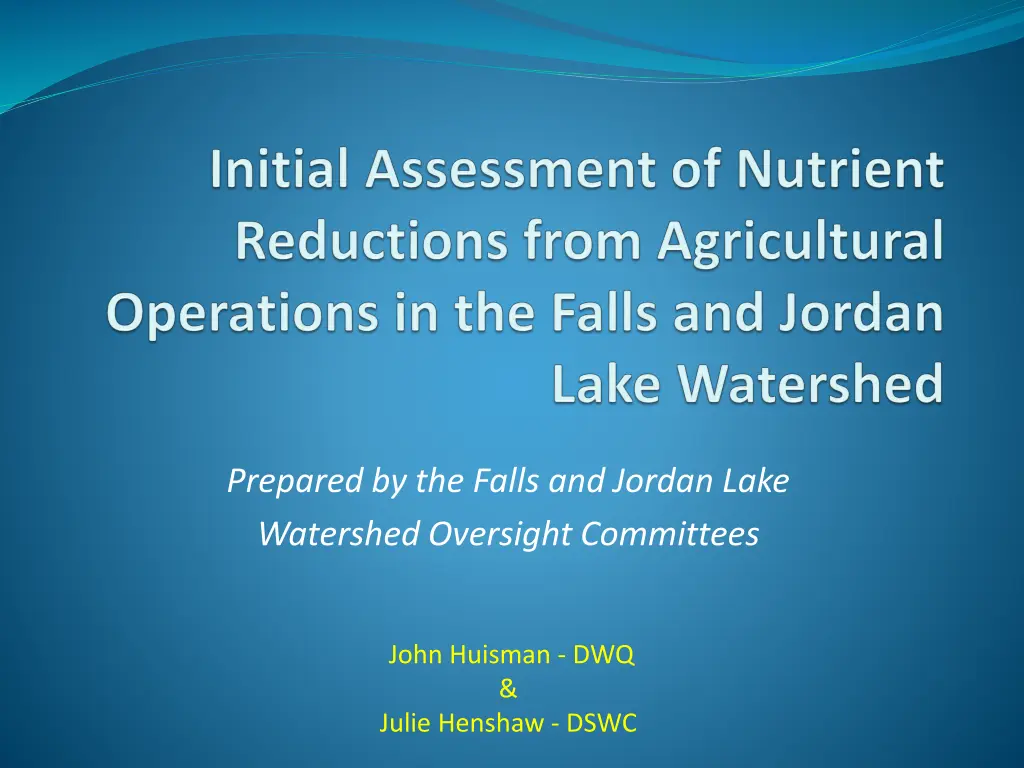
Falls and Jordan Lake Watershed Oversight
Explore the collaborative efforts of the Falls and Jordan Lake Watershed Oversight Committees in implementing rules and goals for agriculture, with detailed information on watersheds, compliance stages, and committee representatives. Learn about accounting methods, NLEW tool, and past initiatives in this comprehensive overview.
Uploaded on | 2 Views
Download Presentation

Please find below an Image/Link to download the presentation.
The content on the website is provided AS IS for your information and personal use only. It may not be sold, licensed, or shared on other websites without obtaining consent from the author. If you encounter any issues during the download, it is possible that the publisher has removed the file from their server.
You are allowed to download the files provided on this website for personal or commercial use, subject to the condition that they are used lawfully. All files are the property of their respective owners.
The content on the website is provided AS IS for your information and personal use only. It may not be sold, licensed, or shared on other websites without obtaining consent from the author.
E N D
Presentation Transcript
Prepared by the Falls and Jordan Lake Watershed Oversight Committees John Huisman - DWQ & Julie Henshaw - DSWC
Reports Produced Through Joint Effort Neuse technicians Producers LACs WOCs Local SWCDs DSWC NRCS CES NCDA & CS NASS NLEW Committee Pasture points committee PTAC NCSU DWQ
Falls Lake 770 sq/mile watershed Covers 6 Counties NMS Effective : 2011 Jordan Lake 1,686 sq/mile watershed Covers 10 Counties NMS Effective : 2009
Falls Agriculture Rule Overview (15A NCAC 02b .0280) Rule Effective: January 2011 Collective compliance similar to Neuse & Tar-Pam Affects All Agriculture Cropland & Pastureland Stage I 2011-2020: 20% N / 40% P Stage II 2021-2035: 40% N / 77% P 2006 Baseline WOC & LACs Develop accounting tools Assist with implementation
Jordan Agriculture Rule Overview (15A NCAC 02b .0264) Rule effective: August 2009 Nitrogen (N) & Phosphorus (P) Reduction Goals N P Upper New Hope Lower New Hope Haw 35% 0% 8% 5% 0% 5% 1997-2001 Baseline Collective compliance by: Aug. 2015-2018 WOC formed - LACs not needed at this time
Watershed Oversight Committee (WOC) Representatives Division of Soil and Water Conservation US Department of Agriculture Natural Resources Conservation Service NC Department of Agriculture & Consumer Services NC Cooperative Extension Division of Water Quality Environmental (3) General Farming Pasture-Based Livestock Equine Livestock Cropland Farming Scientific Community
EMC Approved Accounting Methods 1. Cropland Nitrogen Loss NLEW Tool 2. Phosphorus Loss Qualitative Indicators 3. Pastureland Nitrogen Loss - Point System
Cropland Nitrogen Accounting N-Loss Estimation Worksheet (NLEW) Empirical Spreadsheet-based Model Developed by DWQ, NRCS, and NCSU Estimates Nitrogen Loss from Cropland Ag Compare baseline loss to current crop year Loss Estimates at County Scale Data Collected Annually Number of Acres / Type of Crop Fertilization Rates BMPs implemented
Falls Estimated Cropland N Loss Reductions County 2006 Baseline N Loss (lbs) CY2011 N Loss (lbs) CY2011 N Loss (%) Durham 135,902 98,354 28% Franklin 11,717 6,953 41% Granville 127,704 81,252 36% Orange 347,402 258,165 26% Person 484,123 303,985 37% Wake 49,932 45,232 9% Total 1,156,780 793,941 31%
Phosphorus Accounting Method PTAC Revised Tar-Pam Method EMC approved Phosphorus tracking method in 2005 Qualitative Indicator Trends 9 indicators used to qualitatively assess risk of P loss Baseline vs. Current Crop Year Indicators characterize changes in land use and management to assess P-loss risk compared against the baseline year
Phosphorus Loss Tracking - Falls Lake Watershed 2011 P Loss Indicators CY2011 P Loss Risk +/- Percent '06- '11 change -30% Parameter Units Baseline 2006 10,834 CY2011 7,545 Cropland acres - Cropland conversion (to grass & trees) CRP / WRP (cumulative) Conservation tillage 1,527 1,822 19% acres - 0 0 0% acres 26,787 18,142 -32% acres + Vegetated buffers (cumulative) 52,139 54,390 4% acres - 0 0 0% Scavenger crop acres 3,288 2,782 -15% Tobacco acres - Animal waste P lbs of P/ yr 586,612 536,009 -9% - Soil test P median mg/kg 77 74 -4% -
Falls Pasture Points Accounting N Point Credit Values for Pasture BMPs Comparative analysis for Falls included in future report Reason: Pasture data compiled in Census of Agriculture 5yr Reports Most recent = 2007 (Falls Baseline is 2006) 2012 Data will be available in 2014
Jordan Estimated Cropland N Loss Reductions: Lower New Hope Subwatershed County 1997-2001 Baseline N Loss (lb) 2010 N Loss (lbs) N Loss Reduction (%) Chatham 57,853 33,829 42% Wake 38,272 14,433 62% Total 96,125 48,262 50%
Jordan Estimated Cropland N Loss Reductions: Upper New Hope Subwatershed County 1997-2001 Baseline N Loss (lbs) 2010 N Loss (lbs) N Loss Reduction (%) Chatham 43,826 22,807 48% Durham 39,043 11,726 70% Orange 64,594 44,310 31% Wake 9,649 3,624 62% Total 157,112 82,467 48%
Jordan Estimated Cropland N Loss Reductions: Haw Subwatershed County 1997-2001 Baseline N Loss (lbs) 2010 N Loss (lbs) N Loss Reduction (%) Alamance Caswell Chatham Guilford Orange Rockingham Total 697,924 131,875 220,152 1,393,207 235,230 169,080 2,847,468 536,075 88,205 172,210 829,290 152,648 134,752 1,913,180 23% 33% 22% 40% 35% 20% 33%
Phosphorus Loss Tracking - Jordan Lake Watershed 2010 P Loss Indicators Baseline (average 1997-2001) 87,384 Percent change 13% 2010 P Loss Risk +/- Parameter Units 2010 98,573 Cropland acres + Cropland conversion (to grass & trees) 1,359 1,822 34% acres - Federal data not able to be reported CRP / WRP (cumulative) acres 986.9 N/A N/A Conservation tillage acres 1,997 17,635 783% - Vegetated buffers (cumulative) acres 54,212 0 52,831 0 -3% 0% + Scavenger crop acres Tobacco acres 7,667 4,647 -39% - Animal waste P lbs of P/ yr 9,809,802 5,608,723 -43% - Soil test P median mg/kg 72 71 -1% -
Pasture Nitrogen Accounting Method Subcommittee Revised Tar-Pam Method N Point Credit Values for BMPs BMPs: Buffer & Exclusion Fencing County scale approach Limited Data 5-yr Report (Census of Agriculture)
Pasture Nitrogen Accounting Method BMP Points Exclusion Fencing 30 20 Buffer and Exclusion Fencing 50 30 Buffer and Exclusion Fencing 55 50 Buffer and Exclusion Fencing 60 100 Buffer and Exclusion Fencing 65
Jordan Summary table Subwatershed Required nitrogen reductions 2007 nitrogen point reductions from pastureland Lower New Hope No increase in nitrogen (0 points) 0 points Upper New Hope 35% nitrogen (35 points) 0.3 points Haw 8% nitrogen (8 points) 5.0 points
Looking forward Funding for staff is critical, without which tasks would fall to the voluntary LACs (Falls) or WOC (Jordan) for data compilation; staff also needed for BMP installation WOCs will continue working with LACs and farmers to implement the rules and adopt nutrient-reduction BMPs WOCs will continue to review data from all studies to incorporate into the process WOC members are working with DWQ on trading nutrient offsets Efforts underway to complete next annual report in both watersheds

